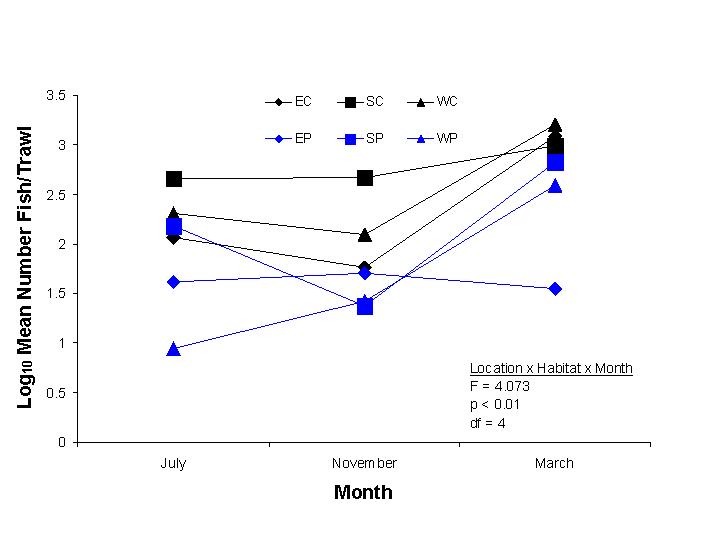
Alterations of freshwater flow into estuaries effect fishes directly and indirectly. Direct impacts relocate fishes by high flow, changes in salinity or temperature beyond physiological tolerances, or extreme turbidity. Indirect effects result from changes in habitat distribution or quality. The distribution, species composition, and landscape (patchy vs continuous) of seagrass are partly a function of salinity and depth (light attenuation), and changes in water flow that influence seagrass indirectly impact associated fishes. In Florida, seagrass beds are defined as continuous or patchy on a hectare scale, but standard gear samples on a m2 scale. Fishes in seagrass beds are being sampled every four months in three locations (one patchy, one continuous site per location) to test two hypotheses: fish communities differ between continuous and patchy seagrass; and salinity differences among locations influence species composition. Salinities differed among locations, and because salinity was positively correlated with water clarity, the depths of grass beds varied with salinity. Fish abundance and species richness varied among continuous and patchy sites but not due to salinity: continuous seagrass habitats harbored more fish and more species than patchy habitats, and these differences were consistent across seasons. Season was the strongest factor underlying patterns in species composition of fishes, overriding habitat type and location. The greatest apparent threat to seagrass-associated fishes in Charlotte Harbor is loss of habitat due to decreased water clarity, particularly during the wet season when freshwater flows are greatest.



